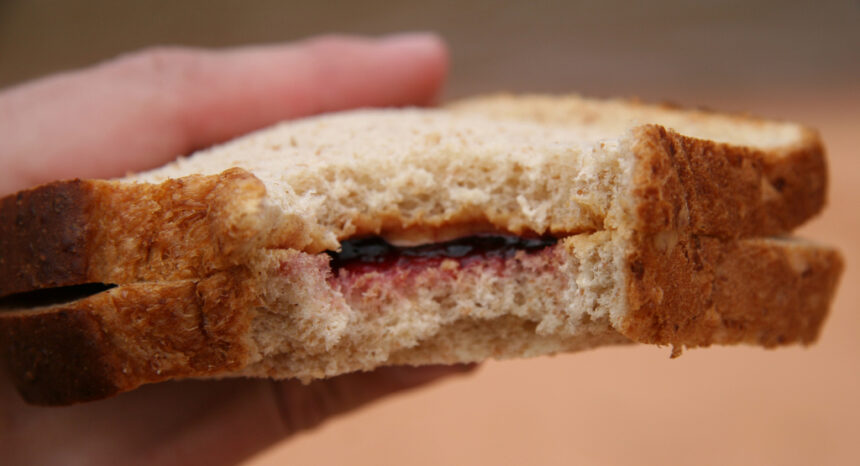Massachusetts school policies that ban students from bringing peanuts from home or require classrooms to be “peanut free” have no effect on the rate at which school nurses administer epinephrine to kids who are allergic to peanuts or tree nuts, according to a study published in the Journal of Allergy and Clinical Immunology.
The study suggests one policy may be effective: Prohibiting peanut products at certain tables in the cafeteria.
As students start back to school each fall, campus administrators and individual teachers decide which foods kids can pack with their lunches or bring in as snacks. As more youth are diagnosed with peanut allergies and the nation faces a continued shortage of EpiPens, education officials are trying to limit students’ exposure to peanuts and peanut products.
Peanuts are the most common food allergen among children in the United States, posing a serious health risk to almost 2.5 percent of all kids under age 18, according to research published in November 2017 in the Annals of Allergy, Asthma & Immunology. That represents an increase of 21 percent since 2010.
Nationwide, over the years, school officials have adopted a variety of policies to keep peanuts away from allergic kids — from bans that apply to everyone on an entire campus to restrictions within certain classrooms or parts of the cafeteria.
A team of nine researchers sought to determine which school policies may be best for reducing allergic reactions. Their study, “Impact of School Peanut-Free Policies on Epinephrine Administration,” was published in August 2017. It’s the first study to examine the topic, according to the authors.
The main takeaway: While no policy was associated with a complete absence of allergic reactions, schools with peanut-free tables had lower rates of epinephrine administration than schools that didn’t.
The researchers say peanut bans are probably difficult to enforce, which may explain why peanut-free schools and schools with peanut-free classrooms do not have lower rates of epinephrine administration. They note that families and school officials may have different interpretations of what a peanut-free food is. Also, parents might not read product labels carefully before sending food with their kids.
It might be easier to monitor what’s eaten at peanut-free tables, which serve a limited number of children.
“Purely in terms of safety, the presence of peanut-free cafeteria tables may lead to reductions in allergic reactions,” two of the authors, Lisa Bartnikas and Wanda Phipatanakul, told Journalist’s Resource in an e-mail.
Bartnikas, Phipatanakul and their colleagues analyzed records completed by school nurses at 2,223 public schools across the Bay State between 2006 and 2011. They matched rates of epinephrine administration to different school policies.
In Massachusetts, school nurses are required to report epinephrine administration to the Massachusetts Department of Public Health. Because some reports only cited “nut” as the likely trigger of an allergic reaction, the researchers included reports related to peanuts and tree nuts in their analysis.
Here are some of their other key findings:
- Nurses administered epinephrine to treat an allergic reaction to peanuts or tree nuts 45 times during the 2010-11 academic year. Epinephrine administration increased by 23 percent each year between 2006 and 2011, on average.
- Elementary schools were more likely than middle schools and high schools to adopt policies prohibiting or restricting peanuts. For example, 97.9 percent of middle schools and high schools allowed students to bring peanuts from home, compared to 85.5 percent of elementary schools. Meanwhile, 96.2 percent of elementary schools had peanut-free tables while only 81.6 percent of middle schools and high schools did.
- “A unique finding of our study was the diversity of school policies restricting peanuts. From 2006 to 2011, 56.6 percent to 59.1 percent of schools banned peanuts from being served, 90.5 percent to 91.1 percent had peanut-free tables, 65.6 percent to 67.4 percent had peanut-free classrooms, and 6.3 percent to 10.3 percent banned peanuts from home. Importantly, there was considerable variability in how schools defined a self-designated peanut-free school, making the term misleading and open to misinterpretation,” the researchers write.
The authors note in their paper that regardless of what policies are in place, it’s important to “remain vigilant that food allergens may still make their way into schools despite such policies, and to always have ready access to epinephrine for timely treatment.”
Some other helpful resources for journalists:
- A 2018 study published in Clinical Reviews in Allergy & Immunology, “Possible Role of Environmental Factors in the Development of Food Allergies,” looks at how breastfeeding, maternal diet, household dust and other factors might help explain why allergies develop.
- A 2018 study in The Journal of Pediatrics, “Peanut Allergy: An Epidemiologic Analysis of a Large Database,” provides an analysis of children enrolled in the Riley Peanut Registry project, 67 percent of whom reported having a peanut allergy and 33 percent of whom reported having “peanut sensitization.” Of these 1,070 kids, 78 percent were white and 63 percent were male. More than half of the children reported allergic reactions involving the skin.
- Several organizations are working to raise awareness about food allergies, including Red Sneakers for Oakley, Kids With Food Allergies and the Food Allergy & Anaphylaxis Connection Team.
This photo, obtained from the Flickr account of tunnelarmr, is being used under a Creative Commons license. No changes were made.


Expert Commentary